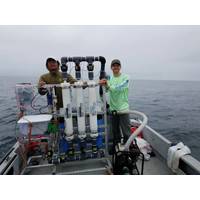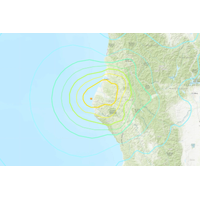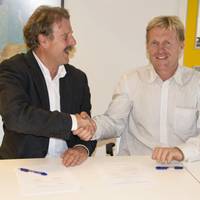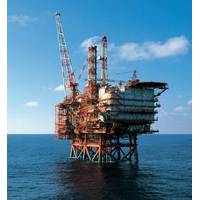
Stepping on the Gas: Rochester Researchers Team to tackle Methane Emissions
waters into the atmosphere? If the process is natural and values are stable, there is less concern to be had. However, if direct or indirect human influence over time is significant, what industries or activities are the contributors? Referencing the Deepwater Horizon oil spill and recent Nord Stream gas leaks, Kessler pointed out that past environmental crises have long indicated the need to better understand the dynamics of methane emissions.This urgency and current lack of data are well answered by the implementation of machine learning models, although their application in the earth sciences is not

Earthquake Offshore California Knocks Out Power for Thousands
, which struck at 2:34 a.m. (1034 GMT), was about 10 miles (16.1 km) deep, USGS said, and struck about 7.4 (12 km) west-southwest of Ferndale, California, a Humboldt County town about a four-hour drive north of San Francisco.Local media and others on social media reported there were numerous gas leaks, powerlines down, and at least one structure fire in Ferndale. A representative from the Humboldt Sheriff's Office was not immediately available for comment.Local media reported that the California highway patrol was responding to reports of cracks in the Ferndale bridge over the Eel River

Leak Detection Sonar Deployed in the US Gulf
release of 100 barrels/day of oil out to 244 meters, a distance only constrained by the trial environment. This was achieved within seconds of the simulated leak occurring. Sentry’s capability, however, covers 100 barrels/day mono-phase oil leaks at distances of up to 740 meters. For mono-phase gas leaks, the system is capable of detecting down to just 1 barrel/day at 500 meters or 100 barrels/day (as measured at depth) at 1,000 meters.According to Sonardyne, the system's ability to accurately localize leaks is unique to the Sentry systemThis latest deployment follows battery-powered deployments

Norway May Review Oil Safety Rules After Eni's Arctic 'Failures'
platform. "It's been a long and winding road for Eni and Goliat. The number of incidents is worrying, and we see that we need to follow it more closely," Eileen O'Connell Brundtland, a spokeswoman for the PSA, told Reuters. Apart from power cuts, there have been several gas leaks, and one person was injured during unloading operations in June. In January, the PSA asked Norwegian Statoil, a licence partner in Goliat with a 35 percent stake, to confirm in writing that Eni, the operator and 65 percent stake holder, was prepared to start production at Goliat.
RV Polarstern Starts Arctic Season
and to expand the long-term studies at the AWI-Hausgarten Before "Polarstern" sails into the Hausgarten, two Italian working groups are using the voyage to travel from Bremerhaven to the North for their research. South of Spitsbergen, the geodynamic and hydrographic conditions and the gas leaks at the bottom of the Kveithola Trench are the focus of the research program. Another focus is on the exploration of spatial and temporal changes in the deep ocean currents southwest of Spitsbergen. Both projects are being carried out in the frame of the EU Eurofleets programme. RV Polarstern

Norway's Subsea Valley Eyes the Future of Things
market. “It’s for exploring and inspecting out-of-the-way, not easy-to-get-to locations,” she says. With one camera, a main thruster, two vertical thrusters and two GoPro cameras for quality, the Blueye is envisioned filming marine life; inspecting subsea infrastructure for gas leaks or surveying a ship’s hull or harbor for the unexpected. The potential for this throw-overboard technology as a diver’s companion is plain to see, as are its possible military applications. Offshore, the Blueye could cheaply “supervise” the lowering of expensive

Kongsberg to Deliver Ocean Observatories for Seabed Research
of development,” said Benedicte Ferré, team leader at CAGE responsible for the observatories. The ocean observatories will be used as instruments in CAGE’s research activities related to frozen methane hydrates under the seabed in the Arctic areas and monitoring of methane gas leaks from natural processes. Monitoring of methane in the water column is essential to understand possible effects on the marine ecosystem and the atmosphere. CO2, ocean acidification and circulation are among other parameters monitored, together with monitoring of marine life. The data from these observator

Saipem: No Complaints about Kashagan Leaks
had not received any complaint regarding pipes it laid for the giant Kashagan offshore oil field in Kazakhstan where production has been halted due to leaks in the network. Production at Kashagan, the world's biggest oil find in 35 years, started last September but was stopped in early October after gas leaks were found in the pipeline network. "Saipem laid the pipes, welded them and tested the welding before delivery in 2008," Chief Executive Umberto Vergine told reporters on the sidelines of Saipem's annual shareholders' meeting. "I don't know what the root problem is and the
GE Introduces Subsea Leak Detection and Multi-Domain Condition Monitoring
;s acquisition of Naxys in 2012, these solutions allow oil and gas operators to monitor the integrity of their subsea installations. Acoustic Leak Detection System (ALD) GE’s new Acoustic Leak Detection System uses passive, acoustic hydrophone technology to detect and locate subsea oil and gas leaks by discriminating the noise of a leak from other sources of sound. Developed from naval military technology, the sensing system enables extremely sensitive and accurate measurement of subsea acoustics and can be used to detect “silent” leaks that occur when there is low flow rate or



 February 2024
February 2024





